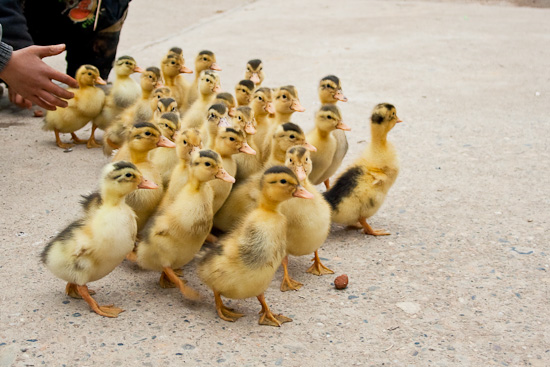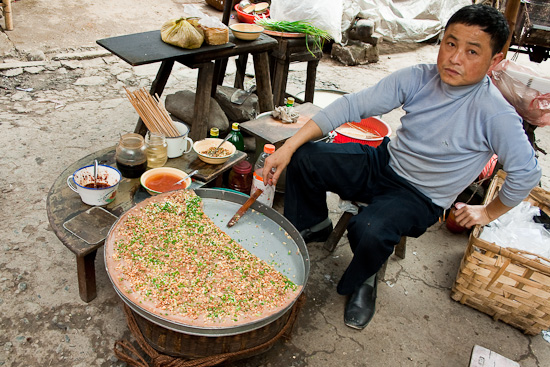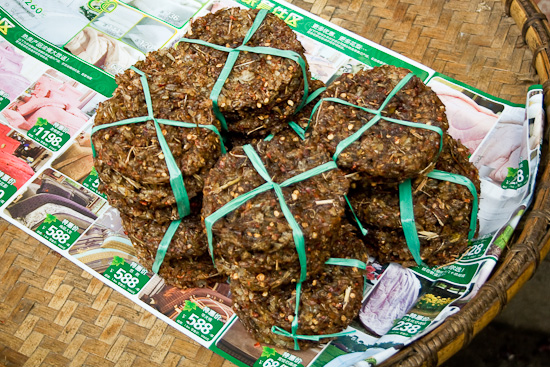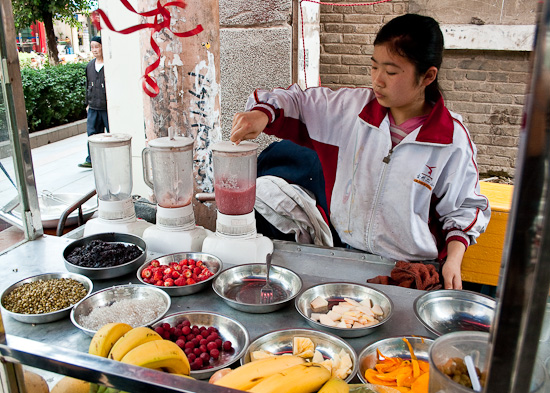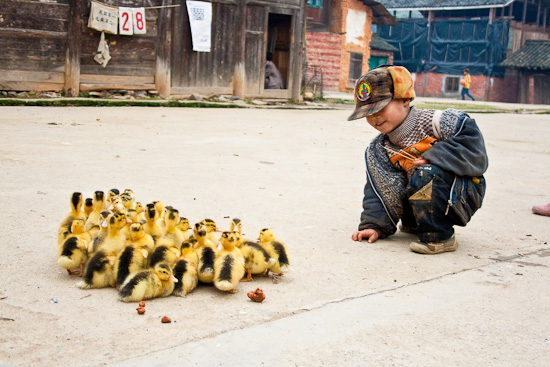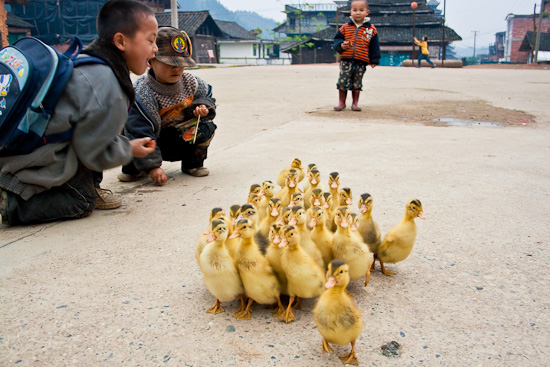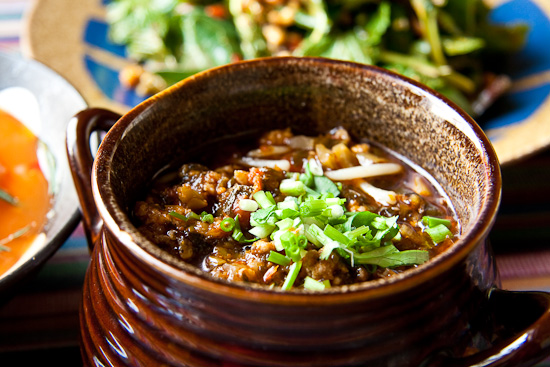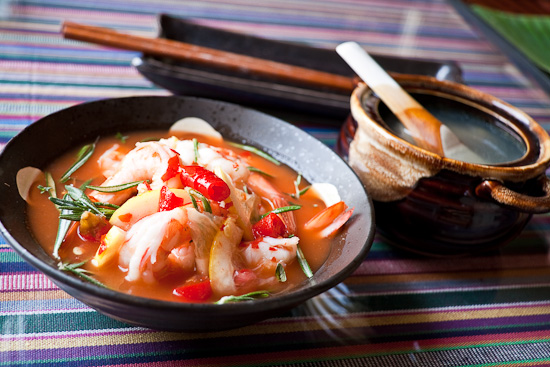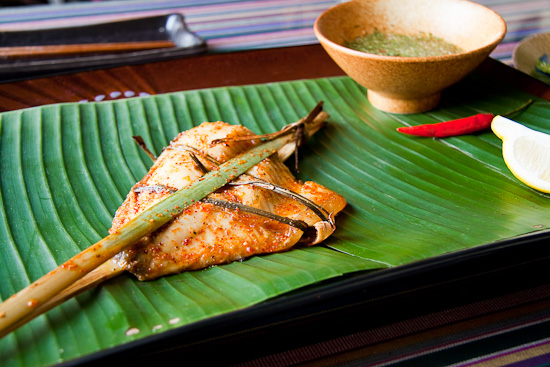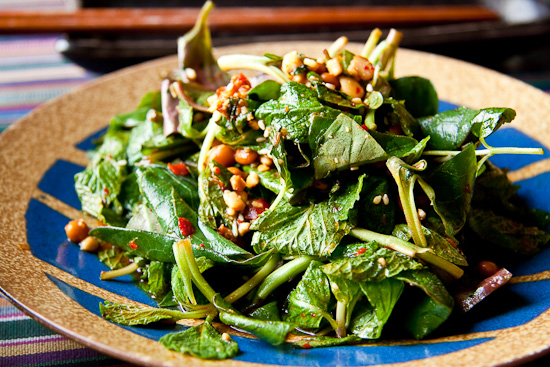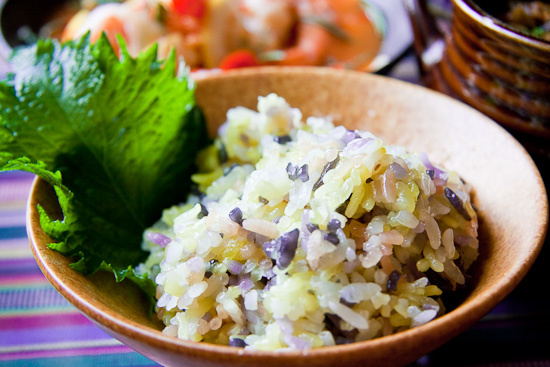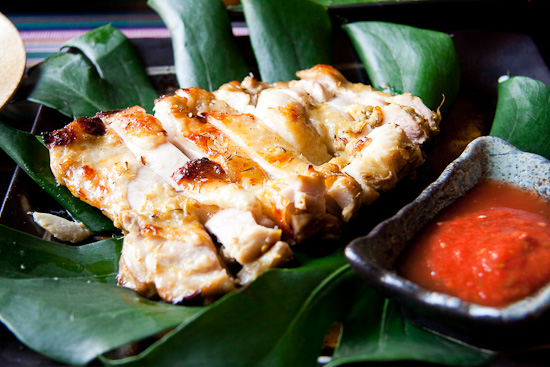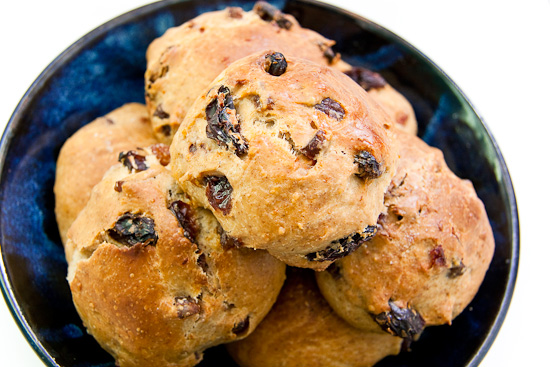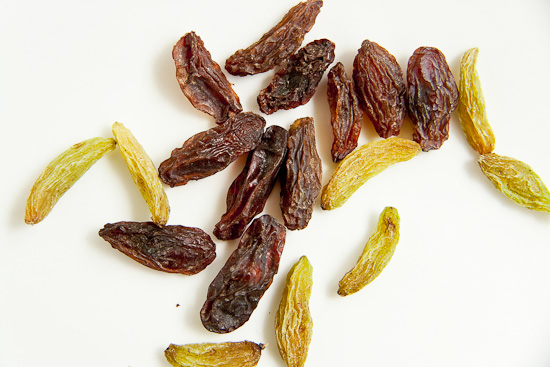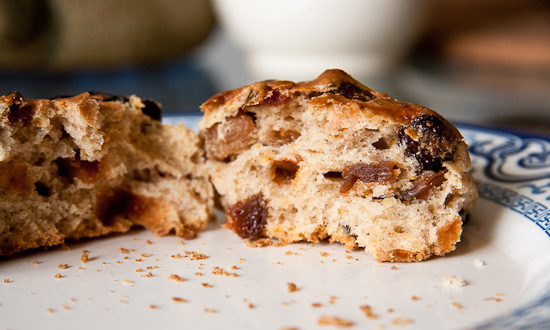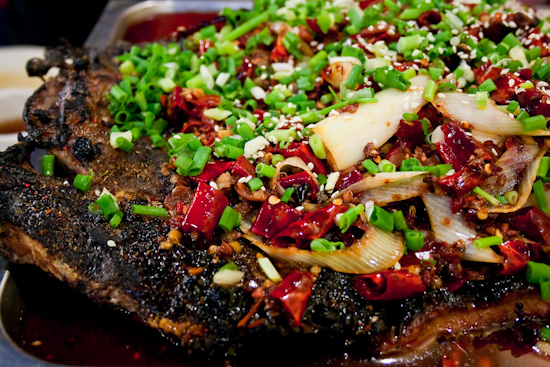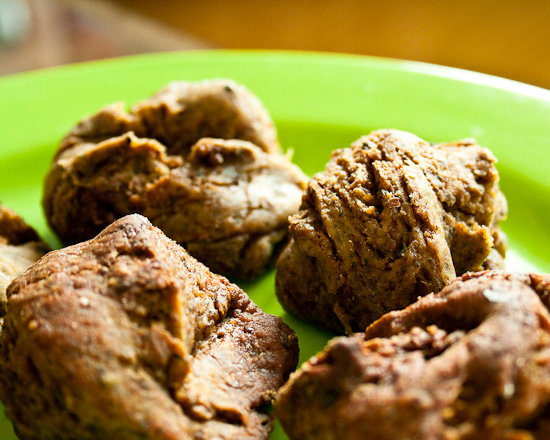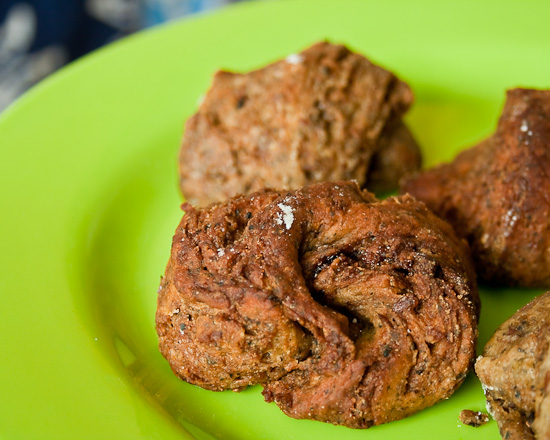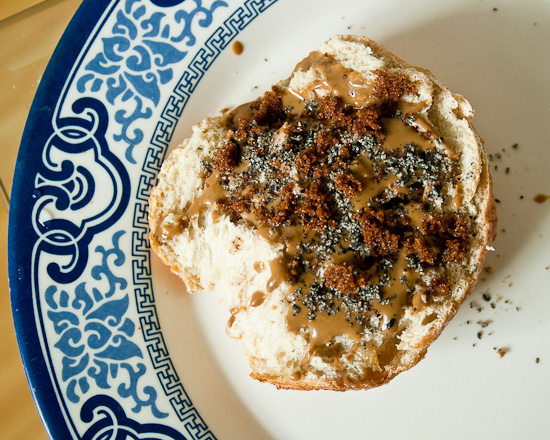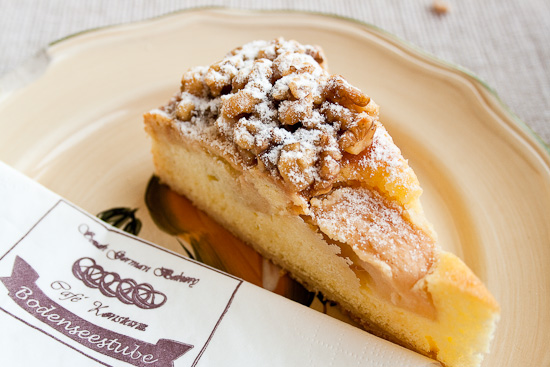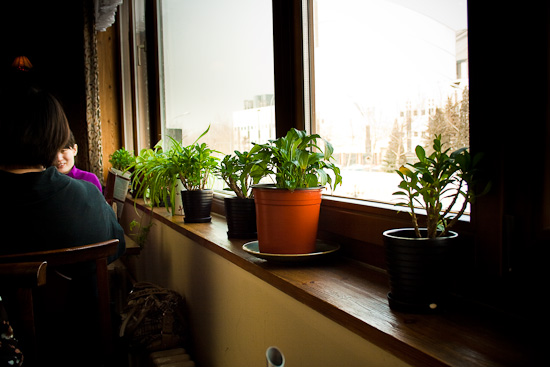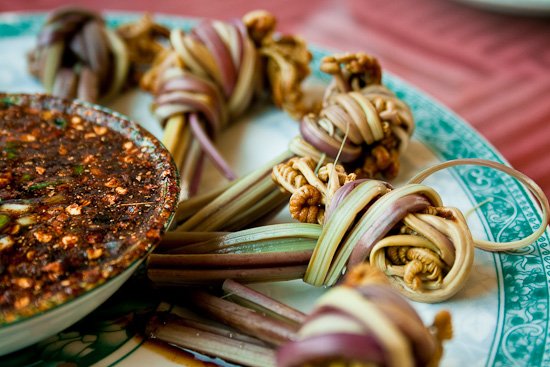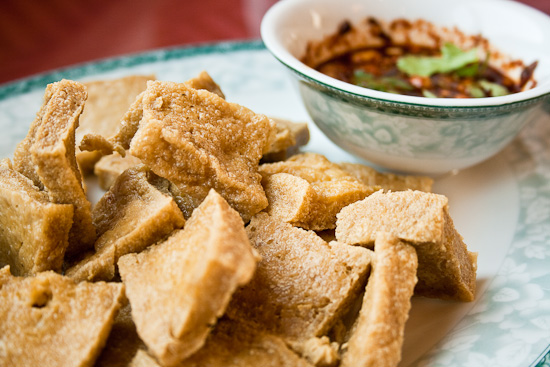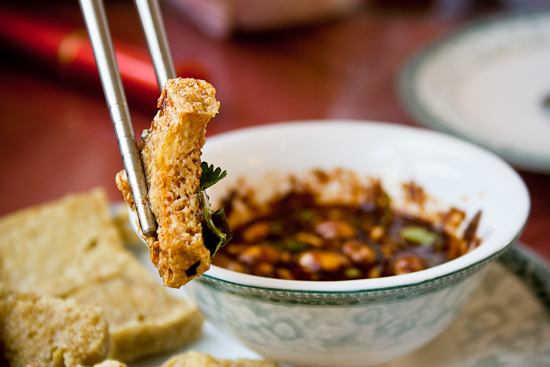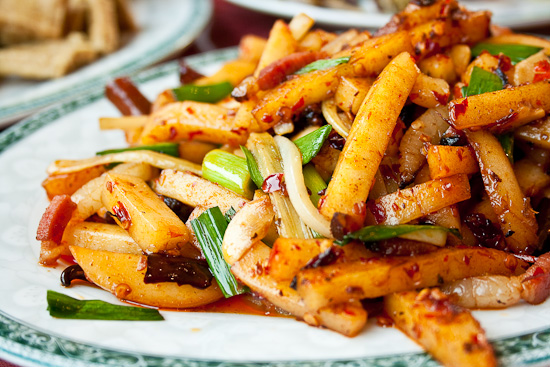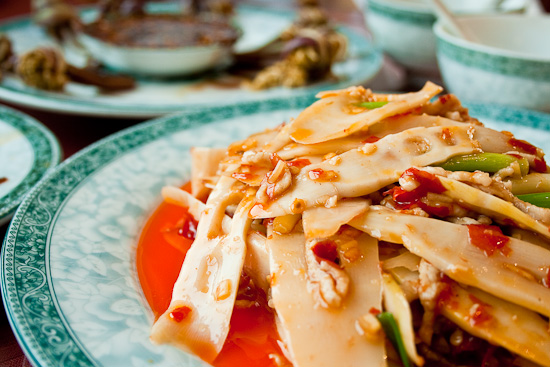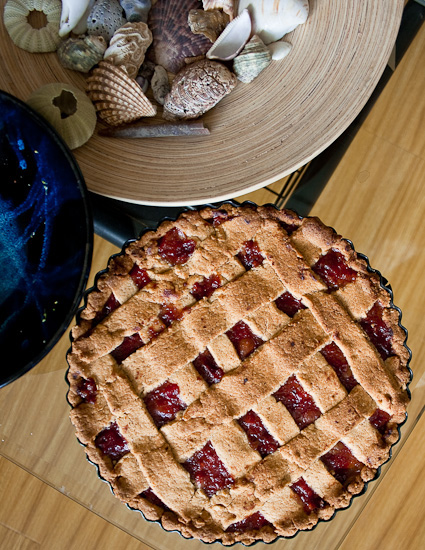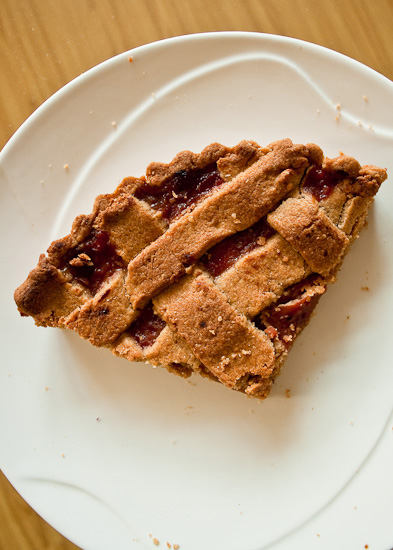Last year in April, my intrepid companion and I were walking the hills of Guizhou province. We wandered through villages of the Dong and Miao minority, traipsed through tea fields and orchards of “tea oil nuts”, befriended ducklings, and became acquainted with every pothole on National Road 321.
It was a magical trip, due in no small part to the beautiful scenery and the abundance of glutinous rice cakes that were given us by villagers. Everywhere we went, people were making baba (粑粑) with the first spring flowers of qingming cao, “clear and bright grass” (清明草). Foraged from the mountains, the sprigs of yellow flowers are chopped up and steamed with ground glutinous rice flour into cakes, or fried into crepes. We learned that this was a traditional food of southwestern China for Qingming Jie, the Tomb Sweeping Festival (April 3 or 4), which in Beijing lasts only one day and takes place with little ceremony or pomp.
Not so in the remote mountains of Guizhou, where the Qingming baba are made early, and made continuously, throughout late March and April (the date of Qingming itself is also rather flexible, with some places not celebrating until mid-April). Sharing seems to be the norm: many people gifted us with a hunk of their own homemade baba, whether we happened to be eating in their restaurant or if we had just met them walking on the mountain. As a result, we were able to try a wide variety of these rice cakes, made in different styles by different people (mostly women, actually) from different villages.
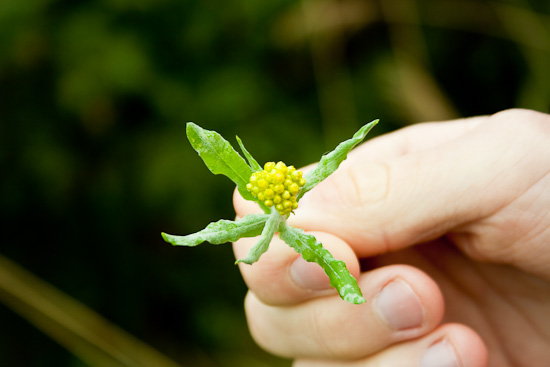
The small yellow flowers add a fresh, herbal flavor to the rice cake, as well as a muddy-green lavender hue (the strange science of flower dyes). They’re chopped so finely as to not affect the texture, which is chewy and sticky, like that of any good sticky rice confection. The specimens we encountered in Yunnan, Guizhou and Guangxi were all lightly sweetened, though people in other regions of China also make savory versions stuffed with a filling.
Officially named 鼠鞠草 (shuju cao) in Chinese and Jersey cudweed (Gnaphalium affine) in English, this little flower is said to clear the lungs and cure the cough. Proper Qingming baba should be made from wild-picked plants, though old ladies also sell ready-made cakes for busy townsfolk. Interestingly, qingming cao also features in the seven-herb rice porridge made for Japan’s Nanakusa no sekku (Festival of the Seven Herbs). This holiday originates from southern China, where since the Han dynasty, people have made a “seven greens” porridge on the seventh day of the first lunar month to celebrate the first shoots of springtime.
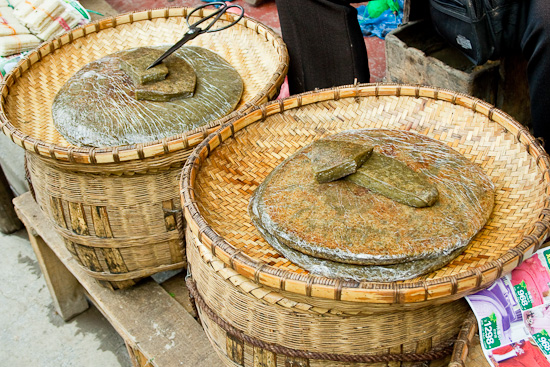
We spotted these Qingming baba in the county seat of Rongjiang (榕江), in southeastern Guizhou, which had a lively food market as well as an especially large Sunday market. The ladies snip off hunks of cake with the scissors, making an excellent afternoon snack.
Rongjiang was a wonderful town for eating, if you didn’t feel like you always had to have a restaurant meal – those are few. There was a small family-run stall that made wonderful spicy stir-fries from an ever-changing selection of fresh vegetables. But it was the street snacks that were really phenomenal, like this taro cake (yutou gao 芋头糕) studded with cured pork and scallions and all sorts of savory goodness. The cake is chopped into chunks and served in a small bowl with a generous dousing of hot peppers and a dark, delicious sauce, all for around RMB 2.
We also gobbled down a little parcel of these deep-fried patties of glutinous rice (grains, not flour, this time), zhe’ergen roots, and chili peppers. It was crunchy and crisp – like guoba (锅巴), those sheets of rice that have been stuck to the pot – but the outer coating of spices was, frankly, too spicy and greasy. Gabriel was a much bigger fan than I, and did most of the gobbling.
My personal favorite was the 冰浆 (bingjiang) or “ice syrup,” a cross between a smoothie and shaved ice, and which got me to thinking that Guizhou perhaps has a lot in common with other southeast Asia countries. This little girl, her parents’ after-school helper, deftly initiated us into the wondrous world of this refreshing treat, and we rewarded her efforts by returning here multiple times during our Rongjiang stay. Several “fillings” of your choice – fresh strawberries, mangoes, bananas, apples, yangmei (Chinese bayberry), cantaloupe, watermelon, and purple sticky rice – are blended with crushed ice. Then the whole thing will then get several toppings; we recommend sesame, crushed peanuts, and sunflower seeds for crunch and sweet-salty contrast, but you can also choose radioactively colored candy bits to confuse your taste buds. For just RMB 3, you can’t find anything its equal in Beijing – that’s less than the price of a jianbing, these days.
I must also note that no ducklings were consumed at any point on this trip.
